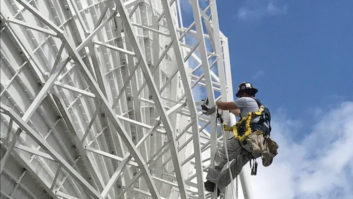
Fig. 1: A promotional image for DataDot Technology USA makes the salient point. At an SBE meeting I attended last year in Missouri, I had a brief chat about preventing copper theft with Engineer Dave Buell, who mentioned an article in a city of Independence newsletter discussing Independence Power & Light’s use of DataDots to mark the utility’s assets.
DataDot technology is an identification and anti-theft security system that its maker says can be used on all kinds of assets.
The product consists of polyester substrate micro-dots, each the size of a grain of sand, onto which information is etched by laser. The dots are described as virtually invisible; they typically are mixed with a clear sealer and brushed or sprayed on to the object you want to protect. They can be applied to equipment and even copper. The ID information can be entered into the company’s database for retrieval should a stolen item be recovered.
The city of Independence is using the product to protect copper systems. You can find out more about the Australian manufacturer at www.datadotdna.com.
Dave also passes along information about using a constrictor knot to attach sash cord or thin nylon rope to a cable (for instance, to use as a pull string when you want to “fish” the cable through a conduit). Dave uses his index finger to form the knot. Once you know it, it takes only a few seconds to permanently attach a piece of rope to a cable. Dave cautions not to cinch this knot on your finger. Once cinched down, you will have to cut the rope to remove it.
After eight years supporting an academic department at a nearby university, Dave is a freelance television engineer once again, his profession for the 20 years prior.
* * *

Fig. 2: This is a female N connector, 75 ohms, in chassis mount configuration. Note the small center female ‘pin’ or receptacle.
Credit: Photos courtesy of Frank Hertel. Interchangeability of 50- and 75-ohm Type N connectors is a point under scrutiny.
Yes, a male 50-ohm plug may fit into the female 75-ohm Type N; but damage to the latter may result. A male 50-ohm Type N has a larger pin diameter than a 75-ohm Type N. Also consider the converse; mating a 75-ohm Type N male connector with a 50-ohm female Type N will not yield a reliable connection (if you make a connection at all).
The 50-ohm Type N center pin is approximately 0.065 inches in diameter. The 75-ohm connector pin is 0.036 inches in diameter. In the case of the BNC connector, in most cases the center pin diameter is identical for either 50- or 75-ohm connectors. The impedance conversion is accomplished by changing the diameter of the insulator/pin passage hole within the connector’s body.
Assuming you have not mixed connector parts, you can determine if the connector is 50 or 75 ohms by looking at the size of the hole in the compression nut. Assuming you are using RG-58 or RG-59 cables, 50-ohm cable will be a sloppy fit through the compression nut; and 75-ohm cable will not fit through the compression nut hole of a 50-ohm BNC compression nut.
At the transmitter site, pay attention to cabling. The FM exciter wants to see 50-ohm impedance. A mismatch will occur if you use 75-ohm cable. You’ll see this as reflected power on the exciter, which cannot be tuned out. So don’t just grab any old piece of coax for this critical connection.
Thanks to Frank Hertel for this important reminder. He is with Newman Kees Engineering.
* * *

Fig. 3: This is a 50-ohn N connector in a right-angle configuration. Again, note the center female receptacle ‘pin’ diameter, compared to Fig. 2.
An engineer called recently about what appeared to be a shorted winding to frame in the modulation transformer in an old 500-watt tube transmitter. Since the transformer frame is grounded, the transformer is shorted and will not operate. His predicament reminded me of a conversation with engineering sage Ira Wilner.
Such shorts can be repaired temporarily by isolating the transformer from the chassis ground, using any insulating material, typically a piece of wood. I say temporarily; this “fix” can represent a hazard to an unsuspecting engineer.
So some precautions are in order. First, order the replacement transformer; the fix is not intended to be permanent. Second, make sure the transmitter door interlocks are operational — the high voltage should cut out if the door is opened. Third, place paper warning-labels on both the transformer and the door to the transmitter. I’d use a broad-tip Sharpie so that the notice is obvious. It wouldn’t hurt to put the same warning on the front of the transmitter, too.
The transformer must be unbolted to set on the insulating material; so if the transmitter is moved, the transformer will move, too — possibly damaging the wiring or winding. It’s a good idea to add that to the note and eliminate surprises.
Contribute to Workbench. You’ll help your fellow engineers and qualify for SBE recertification credit. Send Workbench tips to [email protected]. Fax to (603) 472-4944.
Author John Bisset has spent 44 years in the broadcasting industry and is still learning. He is SBE certified and is a past recipient of the SBE’s Educator of the Year Award.







